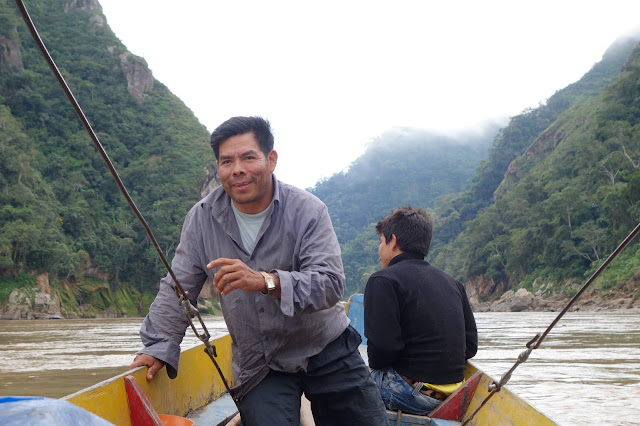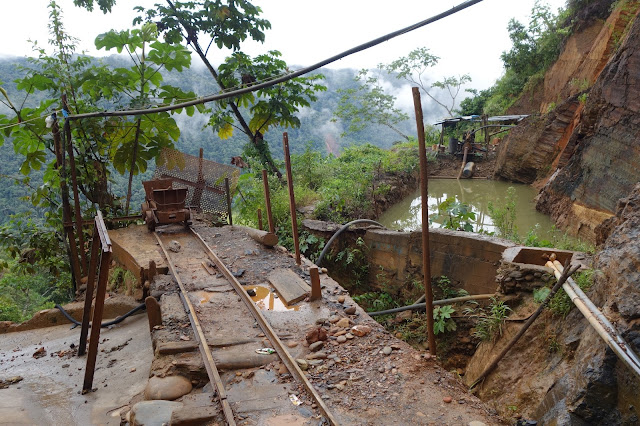From La Paz, I headed to the village of Sorata that sits on the edge of the Altiplano in the shadow of 6368 m Illampu. From here I hiked the precipitous dirt road down to the jungle, picking up rides as and when they came along. I was soon in the clouds and with the humidity the vegetation increased. As I descended, following the Mapiri river, I passed many goldmining operations on the steep and deforested slip-prone hillsides. The ramshackle town of Santa Rosa with its row of empty nightclubs waiting for lucky goldminers to walk in was the hub of activity in the region. Further on I reached Guanay, now well and truly in the jungle, and found a boat to take me down the Rios Kaka and Beni to Rurrenabaque. The trip took 3 days with two nights of camping on the riverbank. As I floated through the lush green jungle with its bugs, humidity, technicolour sunsets and nocturnal cacophony of animal sounds, the stark, cold beauty of the Altiplano seemed a distant memory.
In Rurre I was back on the Gringo Trail and celebrated my birthday with a 3 day tour to the Pampas, where I swam with river dolphins, fished piranhas and spotted caymans, turtles, monkeys, capybaras, a sloth and lots of birds. It was a lot of fun. Swimming in murky water with caimans and piranhas and then having a curious dolphin brush my leg and nibble my big toe was something I won't forget quickly.
On the way to Sorata...not the most flattering portrait of this local offical.
Sorata sits in the shadow of 6368 m Illampu.

It could also be on the French or Italian Riviera.
The way ahead. I travelled by bus as far as Tacacoma.
Tacacoma was shrouded in mist in the mid afternoon.

After spending the night in Tacacoma, I hiked down into the clouds...

...and it was a long way down.
I made good progress thanks to rides from locals. I had a spot in the back.
There were many gold mines along the way, including this one near Santa Rosa.

Finally at Guanay I could continue my journey by boat on the Rio Kaka.

Ruben, el Capitan.

Ruben's boat. Early morning mist was the norm.

A Chinese-run goldmining dredge.

Cacao is grown by the indigenous people living near the river bank. The pulp is quite tasty and sweet, while the beans are used to make chocolate.

Drying the beans.
A butterfly enjoying some papaya seeds.
A capybara on the riverbank. Wildlife was not that prevalent, as the animals have to compete with humans living in the area.

Boats lined up on the riverbank at Rurrenabaque. From here I took a tour to the Pampas, where wildlife can be more easily spotted.
Hoping no caimans were lurking, we jumped in the river and waited for the river dolphins. They didn't take long to arrive.
Squirrel monkeys.

A caiman, which is a type of alligator specific to South and Central America. This one was about 3 m long.

The turtle and the butterfly.

We went fishing for piranhas and managed to catch about 10. They are pretty tasty fried up with a bit of lime juice.

Our hunt for an anaconda in the swamp was not so successful...

We were lucky to spot a 3 toed sloth making his way down a tree trunk.

There was a huge amount of birdlife in the Pampas.

Madrugada.

What lurks beneath...












No comments:
Post a Comment